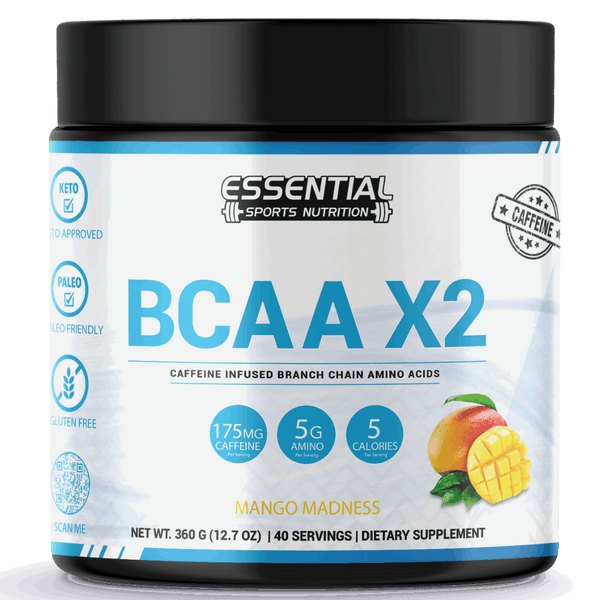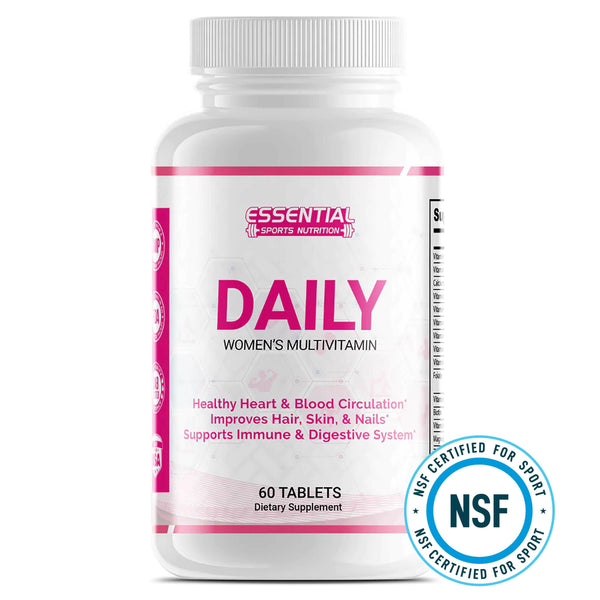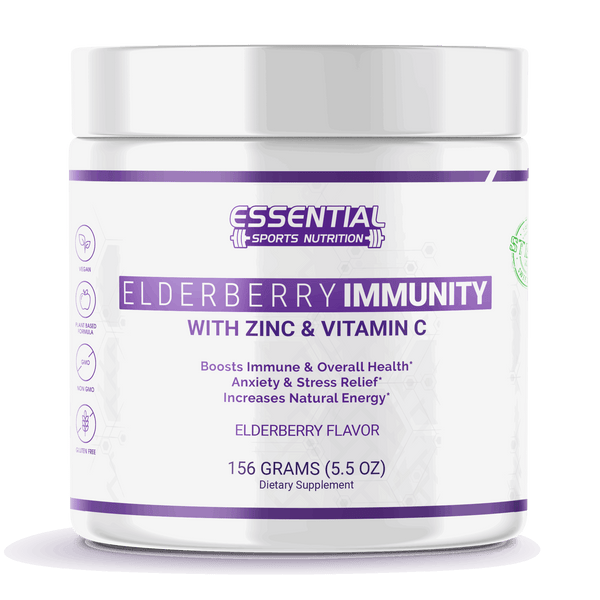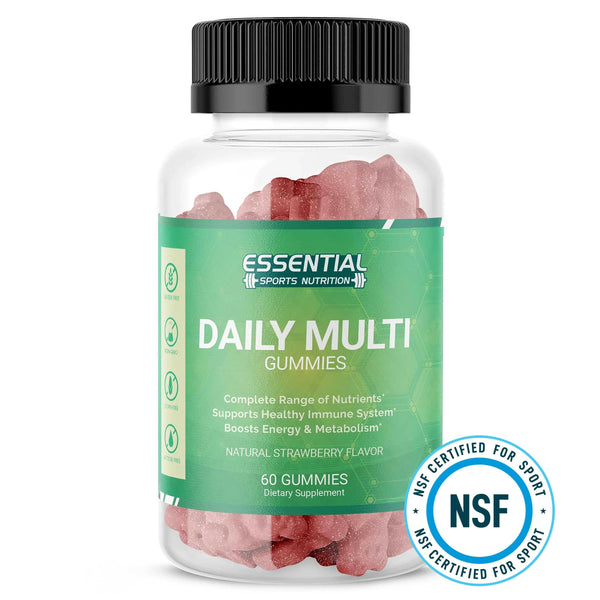Best Types of Cardio Workouts and Exercise
When you decide it's time to give your heart a gentle nudge, you're faced with a myriad of cardiovascular activities that can help you stay in the pink of health. As you consider your options, you'll find that each type of cardio offers its unique blend of benefits, whether you're looking to ignite a fiery calorie burn, enhance your stamina, or simply add a spring to your step. From the rhythmic dance of your feet on the pavement during a morning jog to the serene glide through the water in the pool, you're in control of how you propel your fitness journey forward.
It's essential to weigh the pros and cons of activities like high-intensity interval training against the steady embrace of a brisk walk. So, as you lace up your sneakers or adjust your swim goggles, ask yourself what you hope to gain from the time you dedicate to your heart's content. Keep in mind that the path you choose should be one that not only challenges you but also sparks a sense of joy and accomplishment within you.
Understanding Cardiovascular Exercise

Cardiovascular exercise, commonly known as cardio, efficiently elevates your heart rate and enhances your lung capacity, playing a crucial role in your overall fitness and health. Engaging in regular physical activity such as aerobic exercise is paramount for maintaining heart health and can significantly reduce the risk of heart disease.
When you integrate cardio into your exercise routine, you're not only burning calories for weight management but also triggering endorphin release, which improves mood and overall happiness. The spectrum of activities that fall under cardiovascular exercise is broad, ranging from high-intensity interval training (HIIT) to steady-state options like swimming, cycling, and power walking.
To optimize the health benefits of cardio, it's vital to select a modality that aligns with your fitness level and personal preferences. This ensures sustainability and effectiveness. For instance, if you enjoy group activities, organized sports or dance classes might be most engaging for you. Conversely, HIIT offers a time-efficient workout for those with limited schedules, aiming to raise and lower your heart rate repeatedly to maximize fat burn and cardiovascular improvement.
Running: Pacing for Endurance

As you venture into endurance running, establishing a steady pace is crucial; it's the bedrock that allows you to cover long distances without succumbing to fatigue. By integrating interval training, you can enhance your aerobic capacity, pushing your endurance to new heights. These techniques, coupled with technology like running watches or apps, empower you to fine-tune your speed and track progress with precision.
Establishing Steady Pace
When aiming to boost your endurance through running, it's crucial to establish a steady pace that you can maintain comfortably throughout your workout or race. This method of exercise not only keeps your heart pumping but also promotes efficient aerobic activity, allowing your body to adapt to longer periods of physical stress.
To help you master this, consider these factors:
-
Mental Discipline: Stay focused and resist the urge to speed up prematurely.
-
Body Awareness: Pay attention to your breathing and fatigue levels.
-
Consistency: Aim for even splits, where each segment of your run (measured in minutes) is completed in roughly the same amount of time.
Adopting a steady pace is integral to maximizing the benefits of your cardio exercises, enhancing both your cardiovascular health and overall stamina.
Interval Training Benefits
While establishing a steady pace is fundamental for continuous running, introducing interval training can significantly enhance your endurance and speed. Known as High-Intensity Interval Training (HIIT), these exercises alternate between intense bursts of cardio activity and periods of rest. This method not only helps you lose weight by maximizing the burn calorie effect but also contributes to better lung capacity and cardiovascular fitness.
Incorporating just a few minutes of exercise at high intensity can stimulate metabolism and build muscle, aiding in weight loss and management. Additionally, interval training can help regulate high blood pressure, making it a comprehensive workout option.
| Benefit | Interval Training | Continuous Running |
|---|---|---|
| Calorie Burn | High | Moderate |
| Endurance | Increases Rapidly | Increases Gradually |
| Muscle Building | Targeted | Less Targeted |
| Blood Pressure | Can Improve | Minimal Impact |
Cycling: Low-impact cardio

Embracing cycling as a form of low-impact cardio can significantly enhance your leg strength and cardiovascular health without putting undue stress on your joints. As you delve into types of cardio exercises, it's essential to recognize the unique benefits cycling offers. By engaging in this aerobic activity, you're not only able to burn calories efficiently but also bolster your health in a manner that's sustainable even if you're experiencing joint pain.
Cycling stands out due to its versatility. Whether you're looking to lose weight, improve endurance, or simply enjoy a healthier lifestyle, incorporating cycling into your routine can help reduce health risks associated with a sedentary lifestyle. Here's how you can integrate cycling into your cardio regimen:
-
Indoor Cycling: Utilize stationary bikes or set up a road bike on a trainer to cycle regardless of weather conditions.
-
Commuting: Swap short car trips with biking to seamlessly blend exercise with daily activities.
-
Structured Workouts: Follow specific cycling programs designed to enhance endurance and strength systematically.
An analytical look at low-impact cardio reveals that cycling is not just kind to your joints—it's also a robust workout that adapts to your fitness level, making it an ideal choice for a broad audience seeking health benefits through cardio.
High-Intensity Interval Training (HIIT)
High-intensity interval Training (HIIT) revolutionizes traditional cardio workouts by alternating short, intense bursts of activity with rest periods, maximizing calorie burn and enhancing muscle performance in a fraction of the time. This training modality is not just about shedding body fat; it's also about improving the efficiency of your cardiovascular system and potentially increasing muscle mass.
With HIIT, you can tailor exercises to your fitness level, utilizing movements like jump rope to build leg muscles and boost overall agility. Jumping rope is a quintessential HIIT exercise, effectively elevating your heart rate within minutes. Such high-intensity interval training sessions can range from 10 to 30 minutes a day, making them highly time-efficient.
The technical beauty of HIIT lies in its versatility and the analytical approach to alternating intensity. During high-intensity phases, you're pushing your body to near-maximum effort, followed by short recovery intervals. This cycle prompts a metabolic response that continues to burn calories long after the workout has concluded.
However, it's crucial to balance HIIT with adequate rest, as the intense nature of the exercises can lead to muscle soreness and a spike in cortisol levels if recovery is neglected. By integrating these principles, HIIT becomes an indispensable tool in your fitness arsenal.
Swimming: Full-Body Workout

Shifting from the land to the water, swimming emerges as a comprehensive exercise, engaging your entire body without the high impact on your joints found in many traditional cardio workouts. As a full-body workout, swimming not only strengthens your legs and abs, but also activates your upper body, making it one of the most effective types of aerobic exercises for overall physical and mental health.
When you dive into the pool, you're not just swimming; you're embarking on a journey that can help you burn calories efficiently while also giving your whole body a rigorous challenge. Here are some technical reasons swimming is a stellar cardio choice:
-
Low-Impact Nature: Protects your joints from the stress of high-impact exercises.
-
Resistance Factor: Water offers natural resistance, which intensifies your workout.
-
Adaptability: Cater your swimming routine to fit personal fitness levels and goals.
Rowing: Strength and Cardio Combo
Rowing merges strength training and cardiovascular conditioning into a single, low-impact exercise that activates both your upper and lower body muscle groups. As a type of cardio, rowing stands out because it not only elevates your heart rate but also builds muscular endurance and power. When you perform cardio on a rowing machine, you're engaging in an efficient workout that can help you meet the American College of Sports Medicine's recommendation of at least 150 minutes of moderate-intensity exercise per week.
Moreover, the rowing: strength and cardio combo is unparalleled in its ability to provide a comprehensive workout. The rhythmic, repetitive motion demands a high energy output, measured in minutes per minute, translating into significant calorie burn and cardiovascular improvement. Cardio is a great contributor to a healthy lifestyle, and rowing amplifies this by offering a joint-friendly alternative that reduces the risk of impact-related injuries.
To maximize the benefits of rowing, you should focus on proper form, ensuring that you are using your legs for power and your arms for guidance, which cultivates a harmonious balance between strength and endurance. By incorporating rowing into your workout regimen, you can achieve a well-rounded level of fitness that supports both cardiovascular health and muscular development.
Dance Cardio: Fun and Energetic

As you explore the realm of cardio exercise, consider the array of health benefits offered by dance cardio. With no equipment necessary, you can select from various dance styles to keep your workouts fresh and tailored to your preferences. Analyzing its impact, dance cardio stands out for its ability to merge high-energy movement with the joy of dancing, promoting cardiovascular health in an engaging, social environment.
Health Benefits Galore
With dance cardio, you're engaging in a lively and dynamic workout and significantly boosting your cardiovascular health and mood. Medically reviewed and supported by peer-reviewed studies, research shows that when you incorporate different types of cardio workouts, including dance cardio, you unlock health benefits galore. Unlike the repetitive motion of jumping rope, dance cardio offers variety, which can be key to maintaining your routine.
-
Weight Management: Regular dance cardio helps in managing and maintaining weight effectively.
-
Mood Enhancement: The energetic movements significantly improve mood and happiness.
-
Disease Prevention: At least 150 minutes of moderate-intensity exercise like dance cardio per week reduces the risk of heart disease.
This fun form of exercise isn't just about breaking a sweat; it's a scientifically backed path to a healthier life.
Varied Dance Styles
Exploring varied dance styles through dance cardio not only invigorates your workout routine but also enhances your cardiovascular fitness and coordination. Research suggests that engaging in dance cardio for at least 150 minutes per week can help meet exercise recommendations. Healthline Media, with its strict sourcing guidelines, highlights dance's ability to burn up to 90 calories per minute, rivaling activities like jumping rope.
Daniel Bubnis, M.S., NASM-CPT, NASE Level II-CSS, reviewed the cardiovascular benefits of dance cardio, emphasizing its potential for a significant calorie burn and improved heart health. Below is a table showcasing different dance styles and their respective benefits:
| Style | Calorie Burn (per minute) | Benefits |
|---|---|---|
| Hip-Hop | Around 90 | Agility, Coordination |
| Salsa | Up to 70 | Rhythm, Cultural Appreciation |
| Ballet | 60-90 | Posture, Flexibility |
| Zumba | 70-90 | Stamina, Social Interaction |
| Swing | 60-80 | Balance, Aerobic Fitness |
Equipment Not Required
Building on the diverse range of dance styles beneficial for cardiovascular health, it's worth noting that dance cardio stands out as an exercise that doesn't require any special equipment to get started. This energetic activity can be enjoyed several days per week, and experts recommend at least 150 minutes of moderate-intensity exercise for substantial health benefits.
-
Accessibility: You can practice dance cardio virtually anywhere, making it more likely to stick with your fitness goals.
-
Cost-Efficiency: No equipment means you don't have to invest heavily to start moving.
-
Enjoyment Factor: Many people think of exercise as a chore, but dance cardio's fun nature makes it an important part of a sustainable routine.
Always consult with your doctor before beginning any new exercise regimen to ensure our content aligns with your health needs. All rights reserved.
Types of Cardio FAQs:
Q: What are the benefits of cardio exercise?
A: Cardio exercise can help improve cardiovascular health, aid in weight loss, and improve overall fitness and endurance.
Q: What are some examples of cardio workouts?
A: Some examples of cardio workouts include running, cycling, swimming, jump rope, and rowing.
Q: How can cardio workouts help improve my health?
A: Regular cardio exercise can help improve cardiovascular health, increase endurance, and burn more calories, leading to better overall health and fitness.
Q: What are the best types of cardio exercises for fat loss?
A: The best types of cardio exercises for fat loss include high-intensity interval training (HIIT), running, cycling, and using a rowing machine.
Q: What are the 10 best cardio workouts?
A: The 10 best cardio workouts include running, cycling, swimming, jump rope, high-intensity interval training (HIIT), rowing, jumping jacks, dancing, kickboxing, and cross-country skiing.
Q: How can I perform cardio workouts at home?
A: You can perform cardio workouts at home by using workout videos, doing bodyweight exercises like jumping jacks and high knees, or using equipment such as a jump rope or elliptical machine.
Q: What is the best form of cardio exercise for beginners?
A: Jumping jacks, jump rope, and brisk walking are great forms of cardio exercise for beginners as they are low-impact and easy to start with.
Q: Are strength training workouts considered a form of cardio exercise?
A: While strength training workouts primarily focus on building muscle strength and endurance, they can also elevate your heart rate and be considered a form of cardio exercise, especially when incorporated with minimal rest between sets.
Q: Can cardio workouts be done at home or only in the gym?
A: Cardio workouts can be done both at home and in the gym. There are plenty of exercises that can be done from the comfort of your own home, such as jumping jacks, high knees, or using a jump rope, while gym workouts may involve equipment such as treadmills, elliptical machines, or stationary bikes.
Q: How do different types of cardio exercises impact heart rate?
A: Different types of cardio exercises, such as high-intensity interval training (HIIT) or sprinting, can significantly elevate heart rate, while moderate-intensity activities like brisk walking or light cycling can also get your heart rate up but at a more steady pace.
Other Frequently Asked Questions:
What Are the 3 Main Types of Cardio?
You're wondering about the main cardio varieties, so here's the breakdown: High-Intensity Interval Training (HIIT) ramps up your workout with quick, intense bursts; Moderate-Intensity Steady State (MISS) keeps your heart rate consistently elevated; and Low-Intensity Steady State (LISS) is your go-to for a more relaxed, fat-burning session. Each has its merits, so you'll pick based on your goals and current fitness level. They're all effective, but it's about what works best for you.
What Cardio Burns the Most Fat?
You're likely wondering which cardio burns the most fat. HIIT stands out due to its ability to boost metabolism and burn calories quickly, even after you've finished exercising. It's not just about the duration but the intensity of your workout. Incorporating exercises like jumping rope can also elevate your calorie burn significantly. Remember, the key to maximizing fat loss is to choose activities that you can perform consistently and at a high intensity.
What Type of Cardio Is Best?
The best cardio for you depends on your personal fitness goals, preferences, and physical condition. If you're aiming to burn fat, high-intensity interval training (HIIT) can be highly effective. However, for endurance-building, steady-state activities like running or cycling might suit you better. Analyze your objectives, weigh the pros and cons of each method, and consider any health limitations before choosing a regimen that aligns with your lifestyle and targets.
What Are the 4 Types of Cardiovascular Fitness?
You're asking about four distinct cardiovascular fitness categories. They include High-Intensity Interval Training, where you alternate between intense exercise and rest, and Moderate-Intensity Steady State, which consistently challenges your heart rate. There's also Low-Intensity Steady State, ideal for beginners and fat-burning, and general Aerobic Exercise, which encompasses activities like running and swimming to boost your overall health. Each type has unique benefits tailored to different fitness levels and goals.
Conclusion
With various cardio exercises at your fingertips, you're empowered to elevate your heart health and fitness. Fascinatingly, studies show HIIT can boost your metabolic rate for hours post-workout. Embrace this efficiency by integrating HIIT into your regime, or choose among the myriad options like cycling or dance cardio to match your personal goals and interests. Remember, the best cardio workout is the one that you enjoy and consistently perform. Now, it's time to get moving!




























